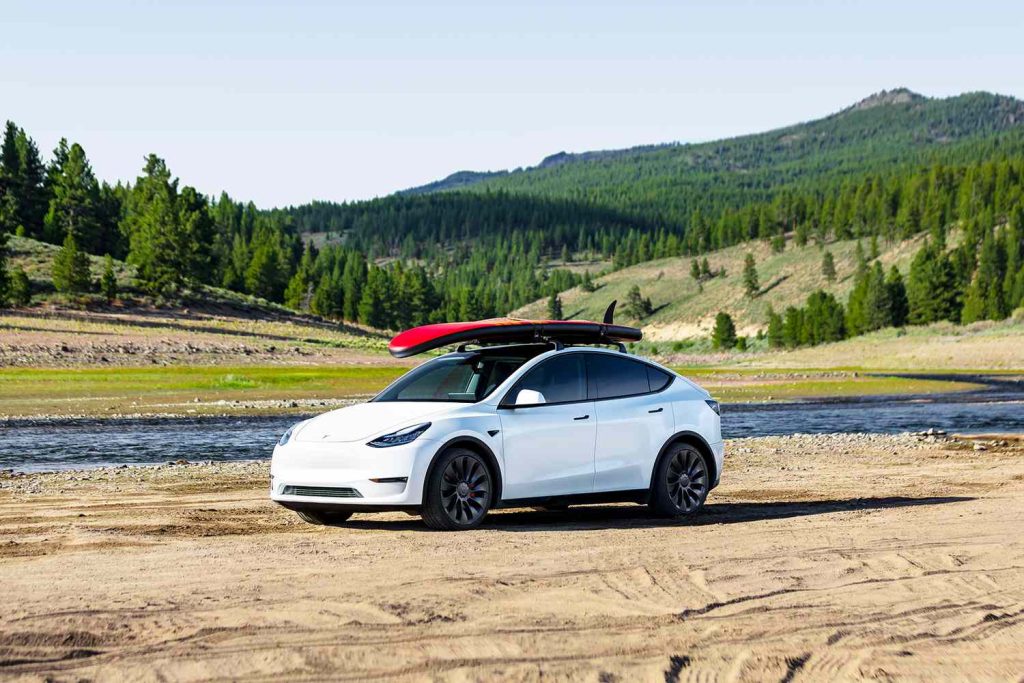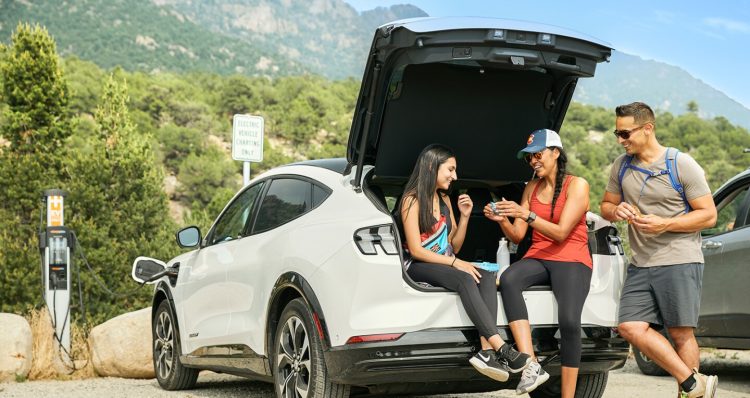Introduction:
The transportation industry is undergoing a monumental transformation, driven by two key forces: intelligent mobility and electrification. As the world grapples with issues such as climate change, urban congestion, and the need for more sustainable transportation systems, the convergence of these two trends—smart technology and electric vehicles (EVs)—is setting the stage for a revolution in how people move from place to place. Over the next decade, we are likely to witness a dramatic shift in the global mobility market as intelligent solutions and electric vehicles redefine how we commute, interact with transportation systems, and address environmental concerns.
The combination of electric mobility—driven by the need to reduce emissions—and smart technology—empowered by automation, connectivity, and data-driven systems—is poised to shape the future of urban mobility. But how exactly will these dual forces influence the evolution of the mobility landscape in the coming years? What kind of innovations can we expect, and how will they impact consumer behaviors, urban infrastructure, and the environment? In this article, we explore these questions and look ahead to the mobility market’s trajectory over the next decade.
1. The Rise of Smart Mobility and Its Impact
The term “smart mobility” refers to a broad range of transportation technologies that incorporate automation, connectivity, and data intelligence to improve efficiency, safety, and the overall user experience. From self-driving cars to shared mobility services, smart mobility is reshaping how we think about travel and transportation.
A. The Role of Artificial Intelligence and Automation
At the heart of smart mobility is the development of autonomous vehicles (AVs). As artificial intelligence (AI) and machine learning continue to advance, we are on the brink of a future where vehicles can operate without human intervention. Self-driving technology promises to reduce accidents caused by human error, alleviate traffic congestion, and make transportation more accessible for individuals with disabilities or those unable to drive.
Over the next decade, we can expect significant improvements in autonomous driving capabilities, with Level 4 and Level 5 autonomous vehicles (fully autonomous without any human intervention) gradually becoming more prevalent. These innovations will not only change how people drive but also impact how vehicles are used in ride-sharing and mobility-as-a-service (MaaS) models.
B. Connected and Intelligent Transportation Systems (ITS)
The next decade will likely see widespread adoption of connected vehicles and smart infrastructure. Vehicle-to-everything (V2X) communication will enable vehicles to communicate with each other, as well as with road infrastructure, traffic lights, and even pedestrians. This connectivity will make driving safer and more efficient by providing real-time information about traffic conditions, road hazards, and potential collisions.
Additionally, intelligent traffic management systems will optimize the flow of traffic, reducing congestion and travel times. These systems will leverage data analytics and AI to dynamically adjust traffic signals, route vehicles, and enhance urban mobility.
C. Shared Mobility and Micro-Mobility
The rise of shared mobility services—such as ride-hailing (Uber, Lyft), car-sharing (Zipcar, Turo), and micro-mobility (electric scooters, bike-sharing)—has already begun to reduce the need for private car ownership in urban areas. In the next ten years, these services will likely become even more ubiquitous, with mobility-as-a-service (MaaS) platforms offering consumers a seamless way to plan, book, and pay for multi-modal transportation journeys.
Smart mobility will also drive the expansion of micro-mobility options. With more people opting for electric scooters, bikes, and other small electric vehicles, these modes of transport will offer an efficient and eco-friendly way to navigate short urban distances, reducing traffic congestion and promoting healthier lifestyles.
2. Electrification: The Future of Sustainable Transportation
Electrification, particularly in the automotive sector, is perhaps the most visible trend in the mobility market today. As governments worldwide set ambitious goals to reduce carbon emissions, the shift toward electric vehicles (EVs) is rapidly gaining momentum. The next decade will see this shift accelerate, with EVs becoming a mainstream alternative to internal combustion engine (ICE) vehicles.
A. The Expansion of EV Infrastructure
One of the major barriers to widespread EV adoption has been the lack of charging infrastructure. However, this is changing quickly. Governments and private companies alike are investing heavily in expanding the charging network, particularly in urban areas and along major highways. The development of ultra-fast charging stations and wireless charging technologies will reduce charging times, making EVs more convenient for consumers.
Furthermore, smart grids and vehicle-to-grid (V2G) technology will allow EVs to interact with the electrical grid, enabling two-way energy exchange. This could help stabilize energy grids by storing excess renewable energy in EV batteries and discharging it back when needed.
B. Advances in EV Battery Technology
Battery technology has been one of the biggest challenges in the widespread adoption of electric vehicles. However, breakthroughs in solid-state batteries, fast-charging solutions, and improved battery life are likely to make EVs even more appealing over the next decade. These advancements will improve the overall performance, range, and affordability of electric vehicles, making them more accessible to the average consumer.
As battery costs continue to decline and energy densities increase, we can expect electric trucks, vans, and buses to become more common, contributing to the electrification of public transport and freight systems. In addition, innovations in lightweight materials and aerodynamic designs will further improve the efficiency and range of electric vehicles.
C. EVs and Renewable Energy Integration
The electrification of the transportation sector must go hand-in-hand with the transition to renewable energy sources. As more people adopt electric vehicles, the demand for clean, renewable energy will rise. Over the next decade, we can expect EVs to become more integrated with solar power, wind energy, and other sustainable sources.
Many consumers will likely adopt solar panels on their homes, using the energy to charge their EVs. In turn, EV owners may become part of a larger energy ecosystem, where EVs not only serve as modes of transport but also as mobile energy storage units that help balance demand and supply on the grid.

3. The Integration of Smart and Electric: A Seamless Experience for Consumers
The convergence of smart mobility and electrification will create an entirely new ecosystem for transportation, blending convenience, sustainability, and intelligence. Over the next decade, consumers will enjoy a seamless, interconnected travel experience that will change how they plan and experience journeys.
A. Mobility as a Service (MaaS) and Seamless Connectivity
MaaS platforms, which combine different modes of transportation into a single integrated service, will play a pivotal role in the future mobility market. Consumers will be able to use mobile apps to plan, book, and pay for journeys that incorporate various forms of transport, including electric cars, buses, trains, scooters, and bikes.
For instance, someone could use a MaaS app to plan a trip that starts with an electric bike, switches to a self-driving EV for longer distances, and ends with a metro ride, all in one seamless transaction. These systems will allow people to choose the most efficient, sustainable, and cost-effective mode of transport for each journey.
B. Personalization and Data-Driven Experiences
The future of mobility will be heavily influenced by data analytics. With vehicles becoming more connected and integrated with city infrastructure, vast amounts of real-time data will be collected and analyzed. This data will enable more personalized experiences for users, from adaptive route suggestions based on traffic conditions to customized EV features that cater to individual preferences.
For example, an intelligent mobility platform could suggest the best time to travel to avoid congestion, offer eco-friendly transport options, or even recommend the ideal charging stations based on the user’s route. Additionally, data could help optimize vehicle usage in shared mobility systems, ensuring availability and efficiency for users.
C. Sustainable Urban Mobility
As cities continue to expand and become more congested, sustainable urban mobility will become increasingly important. Smart and electric mobility solutions will be key to reducing emissions, improving air quality, and making cities more livable.
The rise of smart cities will see the integration of intelligent transportation systems, green spaces, electric vehicles, and clean energy. In these cities, autonomous EVs, shared mobility services, and smart infrastructure will work together to reduce congestion, lower carbon emissions, and promote sustainability. These cities will feature dedicated EV lanes, smart parking systems, and electric public transit options that provide convenient, low-carbon transportation alternatives.
4. Challenges and Opportunities in the Next Decade
While the prospects for the next decade are promising, several challenges must be addressed to fully realize the potential of smart and electric mobility.
A. Infrastructure Development
As smart and electric vehicles become more widespread, the need for more extensive charging networks, smart traffic management systems, and autonomous vehicle infrastructure will increase. Governments and private enterprises must work together to build the infrastructure needed to support these advancements.
B. Data Privacy and Security
With the proliferation of connected vehicles and smart mobility systems, issues related to data privacy and cybersecurity will become more significant. Ensuring the security of personal data, as well as preventing hacking of autonomous vehicle systems, will be critical for public trust and adoption.
C. Affordability and Accessibility
While the technology behind EVs and smart mobility is advancing rapidly, the cost of these vehicles and services may remain prohibitive for some consumers. It will be important for policymakers, manufacturers, and service providers to make smart and electric mobility solutions more affordable and accessible to a wider range of people.
Conclusion: A Smarter, Greener Future
The next decade promises to be a period of profound change for the global mobility market. As smart technologies and electric vehicles converge, they will fundamentally alter how people travel, how cities are designed, and how transportation systems operate. By 2035, we can expect cities to be populated by autonomous, electric vehicles; mobility services to be seamlessly integrated into daily life; and air quality to improve thanks to the widespread use of zero-emission transport.
The future of mobility is smart, electric, and sustainable. If the challenges of infrastructure, data security, and accessibility are addressed, we can look forward to a world where transportation is more efficient, safer, and more environmentally friendly than ever before. As we move toward a greener, more intelligent future, the next decade will be a critical period in realizing the full potential of these revolutionary changes in the way we move.











































